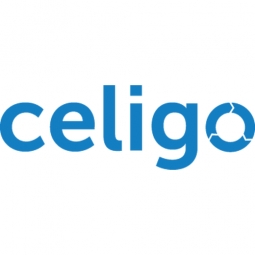Download PDF
Gabriel Cosmetics: Streamlining Operations and Saving Costs with IoT Integration
Technology Category
- Application Infrastructure & Middleware - Data Exchange & Integration
- Application Infrastructure & Middleware - Middleware, SDKs & Libraries
Applicable Industries
- Cement
- Consumer Goods
Applicable Functions
- Maintenance
- Procurement
Use Cases
- Time Sensitive Networking
Services
- System Integration
The Challenge
Gabriel Cosmetics, a rapidly growing beauty brand, faced significant challenges in managing its operations due to the lack of integration between its different systems. As the company expanded and adopted new platforms like Acumatica ERP and Shopify for its webstore, it found itself having to manually integrate these systems. This resulted in time-consuming, error-prone, and expensive manual data entry that hindered its ability to fulfill orders promptly. The company had to dedicate three full-time employees to manage the orders, a costly and inefficient solution. As a lean operation with a small operational team, Gabriel Cosmetics could not afford to have dedicated resources focused on manual data entry. Moreover, it lacked the technical resources to build and maintain integrations themselves.
About The Customer
Gabriel Cosmetics is a beauty brand founded by Gabriel De Santino in 1992. The company focuses on providing earth-conscious, natural beauty products. Over the years, the brand has grown into a beauty empire with the addition of Gabriel, Zuzu Luxe, and Clean Kids Naturally, making up a diverse collection of cosmetics and children’s skincare products to join the existing Gabriel Organics Skincare. The company has seen significant growth in recent years, moving up to the mid-level market as its product became mainstream. To scale with its small operational team as demand for its product grew, the team invested in tools and systems to automate business processes across the supply chain.
The Solution
To overcome these challenges, Gabriel Cosmetics decided to automate its order-to-cash business processes by integrating its systems. The company adopted Shopify as its webstore and automated processes between it and the Acumatica ERP with a Shopify-Acumatica integration by Celigo. With the help of a service partner, the company was able to get the integration up and running without requiring extensive technical resources. The user-friendly platform allowed the team to build and maintain the integration without needing an engineering degree. The integration helped Gabriel Cosmetics completely automate its order-to-cash processes, significantly improving order processing time, reducing errors, and minimizing the number of resources needed to manage the operation. The company plans to expand the Celigo integration to allow wholesale customers to place online orders, as well as EDI.
Operational Impact
Quantitative Benefit
Related Case Studies.
.png)
Case Study
Improving Vending Machine Profitability with the Internet of Things (IoT)
The vending industry is undergoing a sea change, taking advantage of new technologies to go beyond just delivering snacks to creating a new retail location. Intelligent vending machines can be found in many public locations as well as company facilities, selling different types of goods and services, including even computer accessories, gold bars, tickets, and office supplies. With increasing sophistication, they may also provide time- and location-based data pertaining to sales, inventory, and customer preferences. But at the end of the day, vending machine operators know greater profitability is driven by higher sales and lower operating costs.

Case Study
System 800xA at Indian Cement Plants
Chettinad Cement recognized that further efficiencies could be achieved in its cement manufacturing process. It looked to investing in comprehensive operational and control technologies to manage and derive productivity and energy efficiency gains from the assets on Line 2, their second plant in India.

Case Study
Series Production with Lot-size-1 Flexibility
Nobilia manufactures customized fitted kitchens with a lot size of 1. They require maximum transparency of tracking design data and individual processing steps so that they can locate a particular piece of kitchen furniture in the sequence of processes.

Case Study
American Eagle Achieves LEED with GE LED Lighting Fixtures
American Eagle Outfitters (AEO) was in the process of building a new distribution center. The AEO facility management team decided to look at alternate options for lighting layout that could provide energy and maintenance savings. AEO would need a full-time maintenance employee just to replace burned-out fluorescent tubes.







